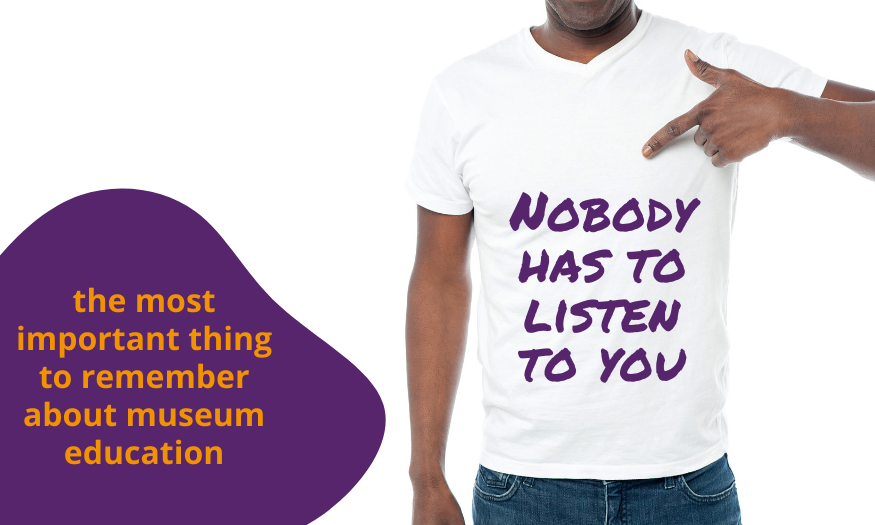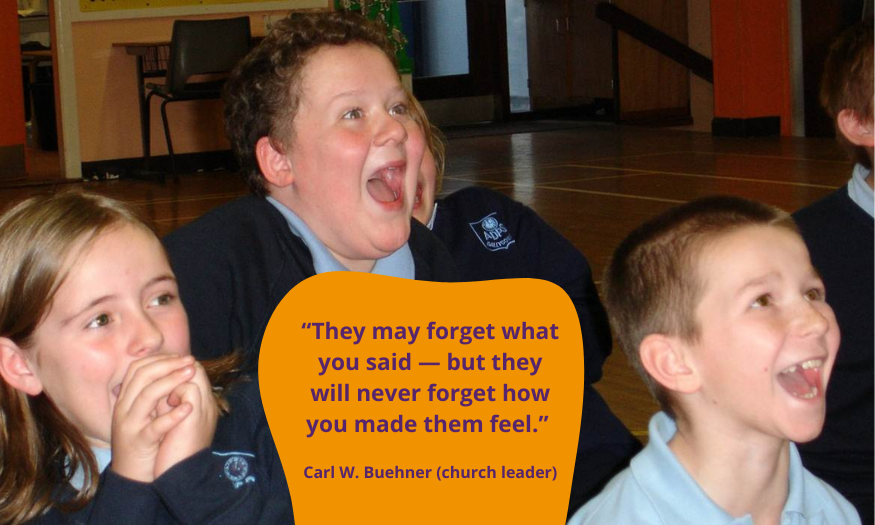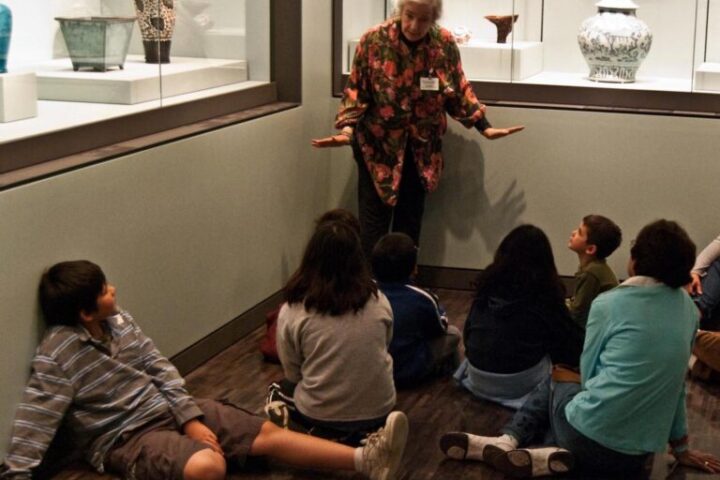
Paul McCrory
Author, trainer and coach at HOOK training
Museums have no borders,
they have a network
October 29, 2021
Keywords: Museum education; Emotions; Engagement; Young audiences; Professional development
This article is based on ideas discussed in Hook Your Audience (volume 1) — How Educational Presenters Can Captivate Their Learners Using Performance Techniques by the author (2021).
Nobody has to listen to you. As a museum educator giving a presentation you succeed, or fail, by how well you can grab and keep the attention of your voluntary audience. These visitors only listen if you interest them. This is especially true when engaging young minds. There is a proven strategy, however, we can borrow from the world of entertainment to secure their attention: provoking their emotions.

The power of emotional hooks
All forms of entertainment create strong and varied emotions in an audience, e.g. movies, stand-up comedy, music concerts. Emotions are what makes an experience entertaining.
Crucially, emotions also provoke the involuntary attention of the audience, regardless of how interested they are initially in the subject. According to the evolutionary theory of emotions, originally proposed by Darwin, emotions were vital in allowing humans to adapt and survive, e.g. instantly feeling fear in response to threats around them. The gatekeepers to the brains of your audience have evolved to let emotions straight through to their consciousnesses. They wave them past without a question.
When I talk about eliciting ‘emotions’ as an educator, I do not necessarily mean provoking tears, sentimentality or controversy. These responses are what people often associate with something being ‘emotional’ in everyday language. Instead, I mean a rich gamut of emotions, e.g. curiosity, amusement, anticipation, uncertainty, happiness, wonder, awe, surprise, joy of understanding, shock, confusion, mild fear, etc.
I often ask the educators I train to think of a strong memory of learning from their school days. Every recollection I have heard has involved a potent emotion. Feelings play a vital, but often neglected, role in the learning process. Learners’ emotions have been shown by researchers to have a powerful impact on attention, motivation, interest, memory and the learner-educator relationship. (You can find a useful introduction to this research in Cavanagh’s The Spark of Learning referenced below.) However, extreme feelings can overpower your key learning points, so educators tend to create moderate emotional responses in their presentations.
For centuries we have artificially separated reason and emotions in our psychological models to help us cope with the complexity of our brains. But over the last 30 years neuroscientists, such as Antonio Damasio, have found that emotions and thinking are inextricably linked. This is most easily demonstrated with that exhilarating state when you realise you have just learnt something — the penny-dropping moment. Is this joy of discovery an emotion or a thought? It is both. Your new understanding involves thoughts, or cognition, but it also brings happiness and pride when you appreciate your break-through.
Using emotional hooks as an educator will not only seize the attention of your audience or encourage them to enjoy the subject; eliciting emotions will also help them understand and remember your content.

Deploy your emotional hooks evenly
When many educators think of a hook, they imagine the strong activity that immediately grabs their learners from the start of the presentation. Powerful openers are important, but the problem with this classic structure is that, no matter how effective, any hook will decay in its impact after delivery.
When I use the term ‘hook’, I am referring to the emotional engagement devices, large and small, short and long, which I strategically place throughout a presentation. As a mental image for this model, think of the density of hooks in a strip of hook and loop fastener, rather than a solitary fishing hook.
This approach develops a vigilance effect in the minds of your audience — they pay attention in order to spot the next rewarding emotional hook. Short hooks can last as little as a fraction of a second, e.g. a momentary delay before you reveal an answer. Yet, some long hooks can span most of a presentation, e.g. telling a story that creates suspense about the final resolution, where all the pieces of the puzzle finally come together.
As you gain experience, your hook antennae will develop and you will get better at judging what will grab your audience. This is a vital skill for any museum educator. Other examples of emotional hooks include:
So, next time you are reviewing a presentation you give, consider doing an emotional audit — which emotional cues are you using in each paragraph of your script and how can you increase and diversify the range of these emotions?
Nobody has to listen to you. But everyone listens to emotional hooks.
References and resources
Cavanagh, S. R. 2016. The Spark of Learning: Energizing the College Classroom with the Science of Emotion. Morgantown, West Virginia: West Virginia University Press.
Damasio, A. 2006. Descartes’ Error: Emotion, Reason and the Human Brain. London: Vintage.
Darwin, C. 2013. The Expression of the Emotions in Man and Animals. Cambridge: Cambridge University Press.
McCrory, P. 2021. Hook Your Audience – summary. Available at: https://www.hooktraining.com/hook-your-audience-summary/
